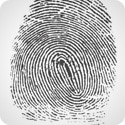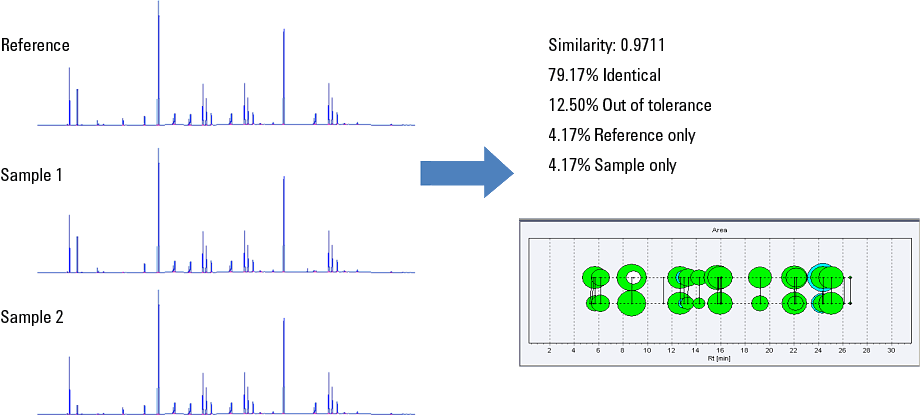Access Agilent eNewsletter, August 2013
>> Update My Profile | Subscribe to Access Agilent | Article Directory

Software plug-in automates chromatographic fingerprint matching
By Eric Phillips
Agilent GC Outbound Product Marketing Manager
As an analyst using a gas chromatograph (GC) or a liquid chromatograph (LC), how often have you been asked to analyze a sample to identify what the sample is, what organic contaminants it might contain, or how much of certain compounds are in the sample? There are several ways to accomplish those objectives. The most common case is to analyze the sample on a GC or LC and compare it to some reference chromatogram(s). The problem becomes the subjectivity of the analysis, and the time it takes to match each peak to the reference. Someone with years of experience can be quite good at this. However, problems in achieving an objective analysis quickly can occur because of limitations in operator experience or when an experienced operator has many other assignments to complete.
A new Agilent software package – designed to provide objective matches of chromatographic patterns, speeds up analysis, and indicates what the sample contains – solves those problems, effectively providing a fingerprint analysis of the sample.
 Enlarge
Enlarge
Figure 1. On the left, the reference chromatogram is compared to two different samples. OpenLAB CDS MatchCompare provides information on how closely the corresponding data files match. The comparative information for Sample 1 vs. the reference is shown on the right.
Automating chromatograph comparisons
Agilent OpenLAB CDS MatchCompare, a plug-in application for Agilent OpenLAB CDS Software, automates the time-consuming task of comparing chromatograms. Its ability to compare the chromatogram of an unknown sample to that of a known sample makes it well suited for analyzing flavors and fragrance. The software quickly identifies similar chromatographic peaks between two chromatograms and compares those areas against predetermined ranges. As seen in Figure 1, the reference graph and graph of Sample 1 show a very high correlation, but 4.17% of the peaks are only in the reference and 4.17% are only in the sample.
OpenLAB CDS MatchCompare identifies chromatographic peak matches even when retention times have shifted over several minutes. Matched peaks and impurities are automatically represented by different colors, both on-screen and in the report. This automatic peak matching with Agilent OpenLAB CDS MatchCompare eliminates errors and speeds data review. It enables the GC/LC operator to:
- Identify and match peaks between two complex samples.
- Monitor product content uniformity by peak area comparison.
- Save time with automated product conformity reports.
- Save time by eliminating reference sample re-injection.
- Handle peak distortions, scaling, column aging, and changes in experimentation conditions, automatically.
Satisfying real-world scenarios
Here is one example of how Agilent OpenLAB CDS MatchCompare can satisfy the workflow needs of a flavor analysis laboratory.
A food company testing a new incoming ingredient to ensure the quality of the natural flavoring would have the laboratory perform a series of tests on the new sample brought to the lab – including standard chemical contaminant tests and tests to determine natural vs. artificial flavorings. The resulting chromatogram would then be printed out and visually compared to several reference chromatograms from a library developed by the lab in the past to establish the baseline for the natural product.
Today, with Agilent OpenLAB CDS MatchCompare, that analytical comparison is automated and the operator is presented with a relative match between the chromatogram of the new sample and the reference chromatograms. This not only speeds the analytical process by going through the entire library quickly, but also provides an objective result of the comparison as a probability result for the lab professional to review.
Want more?
Take a moment to view the OpenLAB CDS MatchCompare Tips and Tricks guide or contact us for additional information on Agilent OpenLAB software solutions today.
>> Update My Profile | Subscribe to Access Agilent | Article Directory
